Luận án Study on the quasi-zero stiffness vibration isolation system
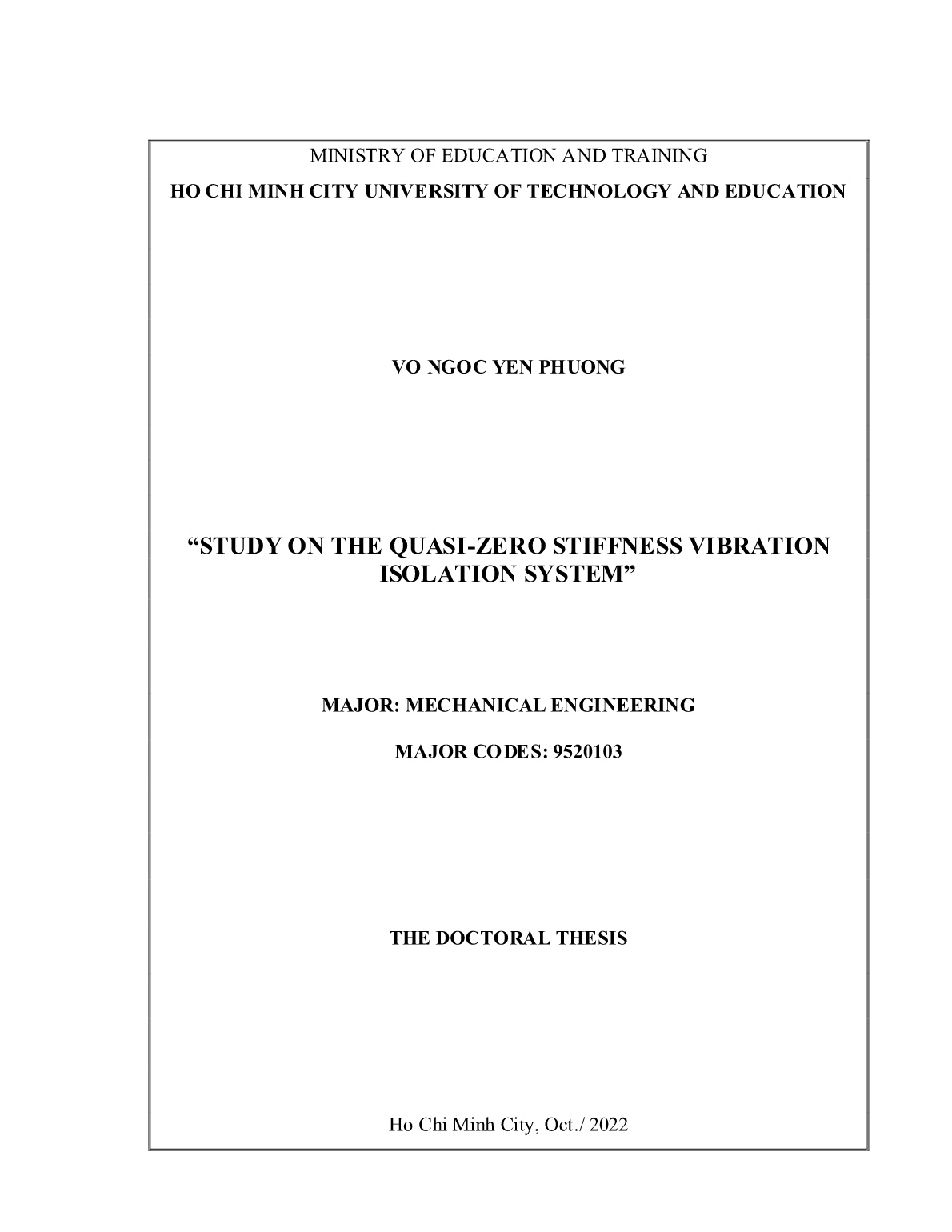
Trang 1

Trang 2
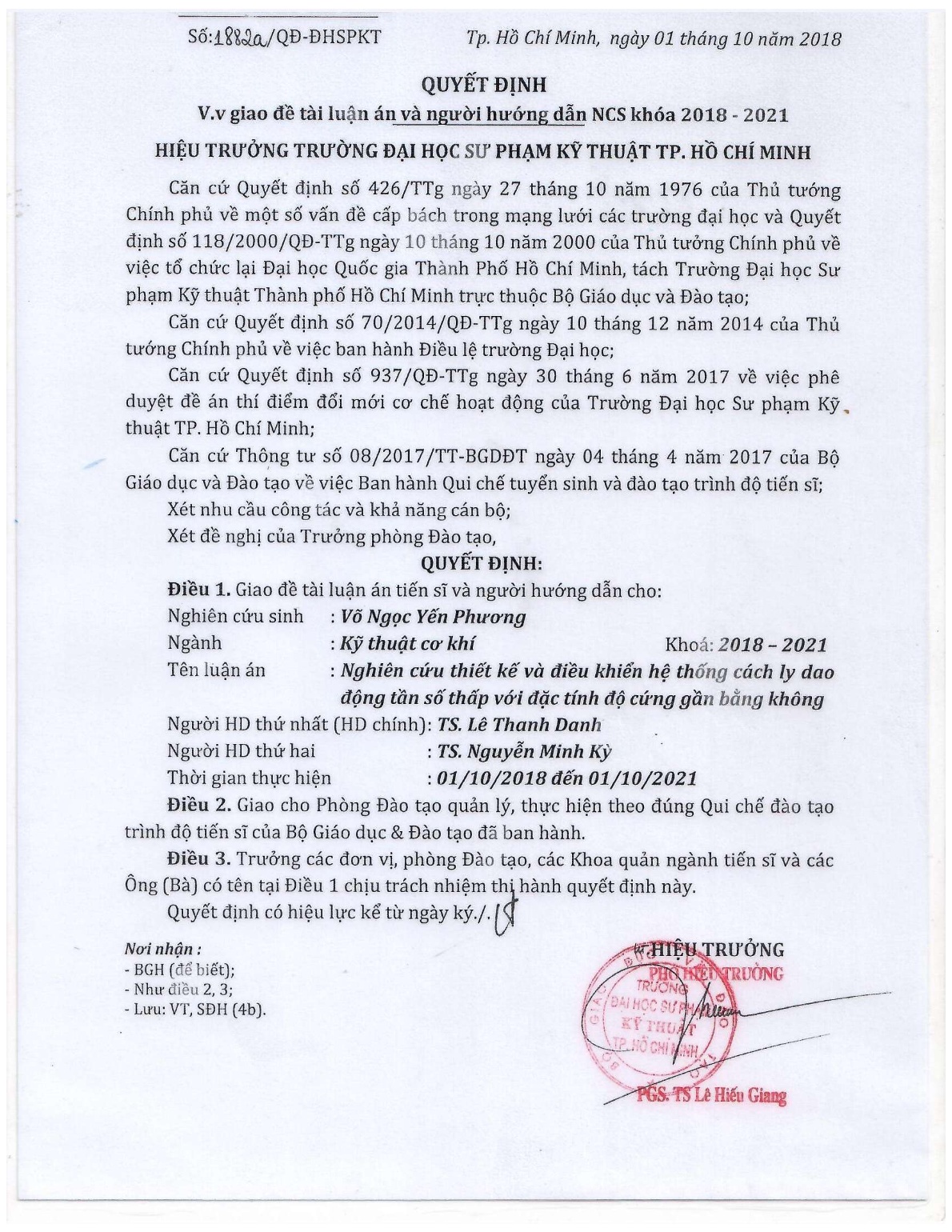
Trang 3
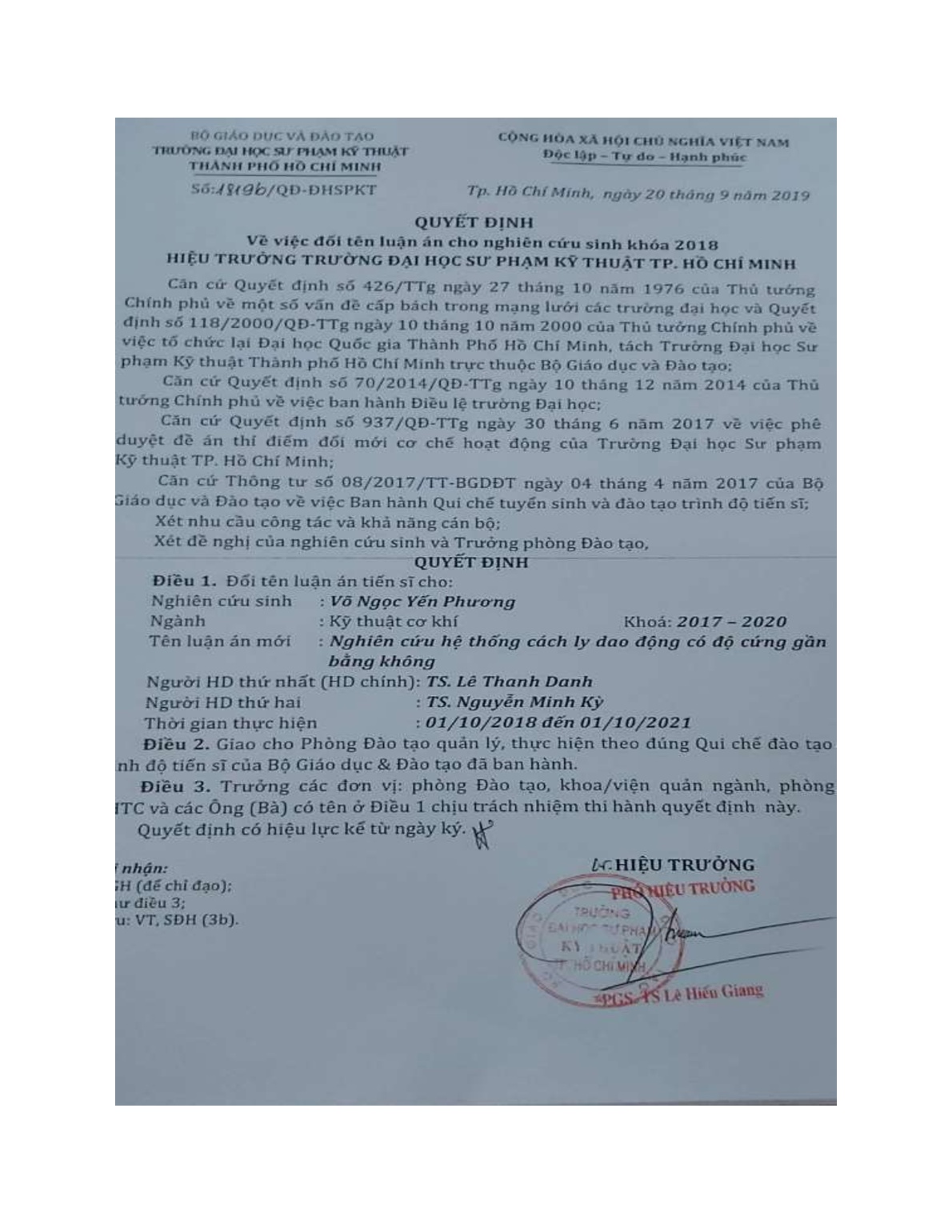
Trang 4
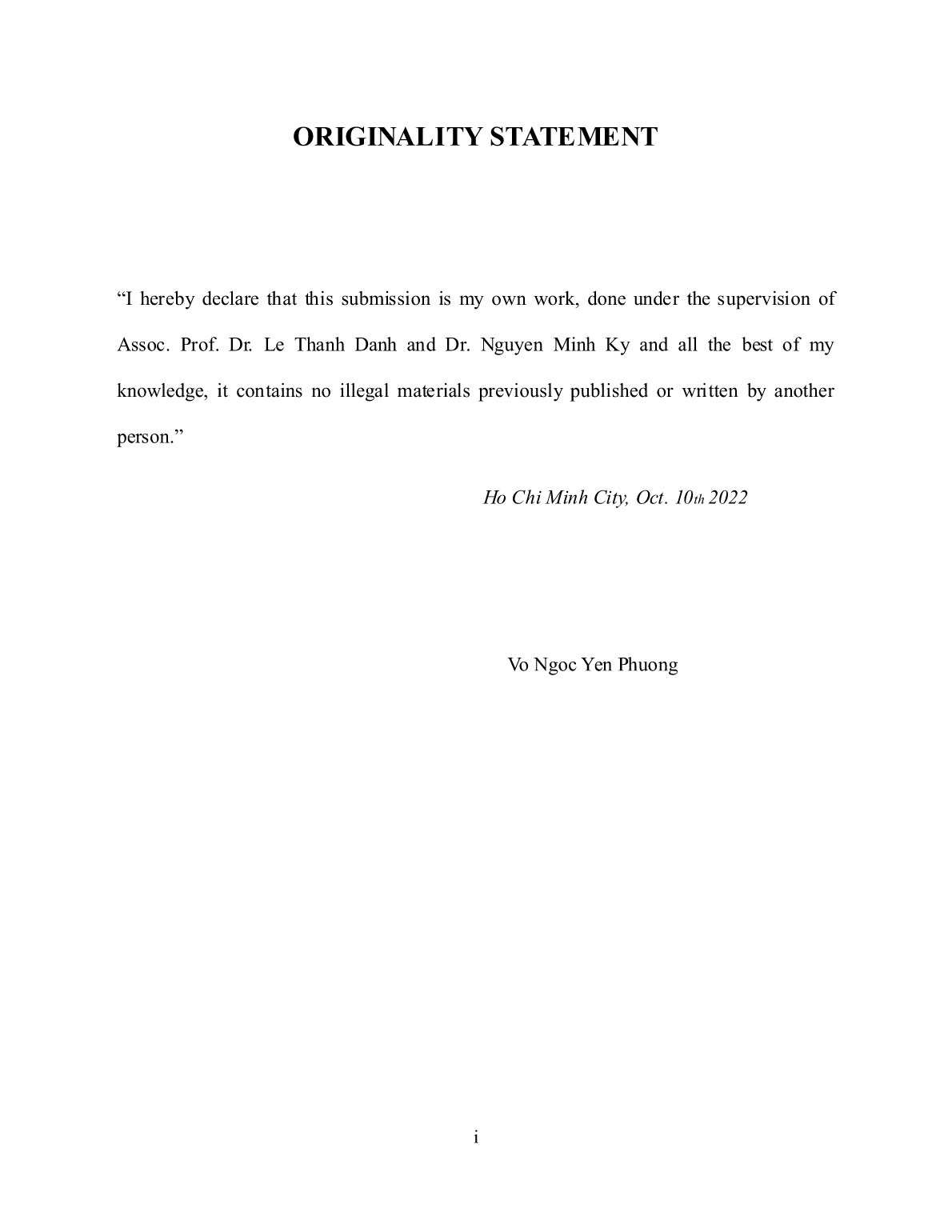
Trang 5
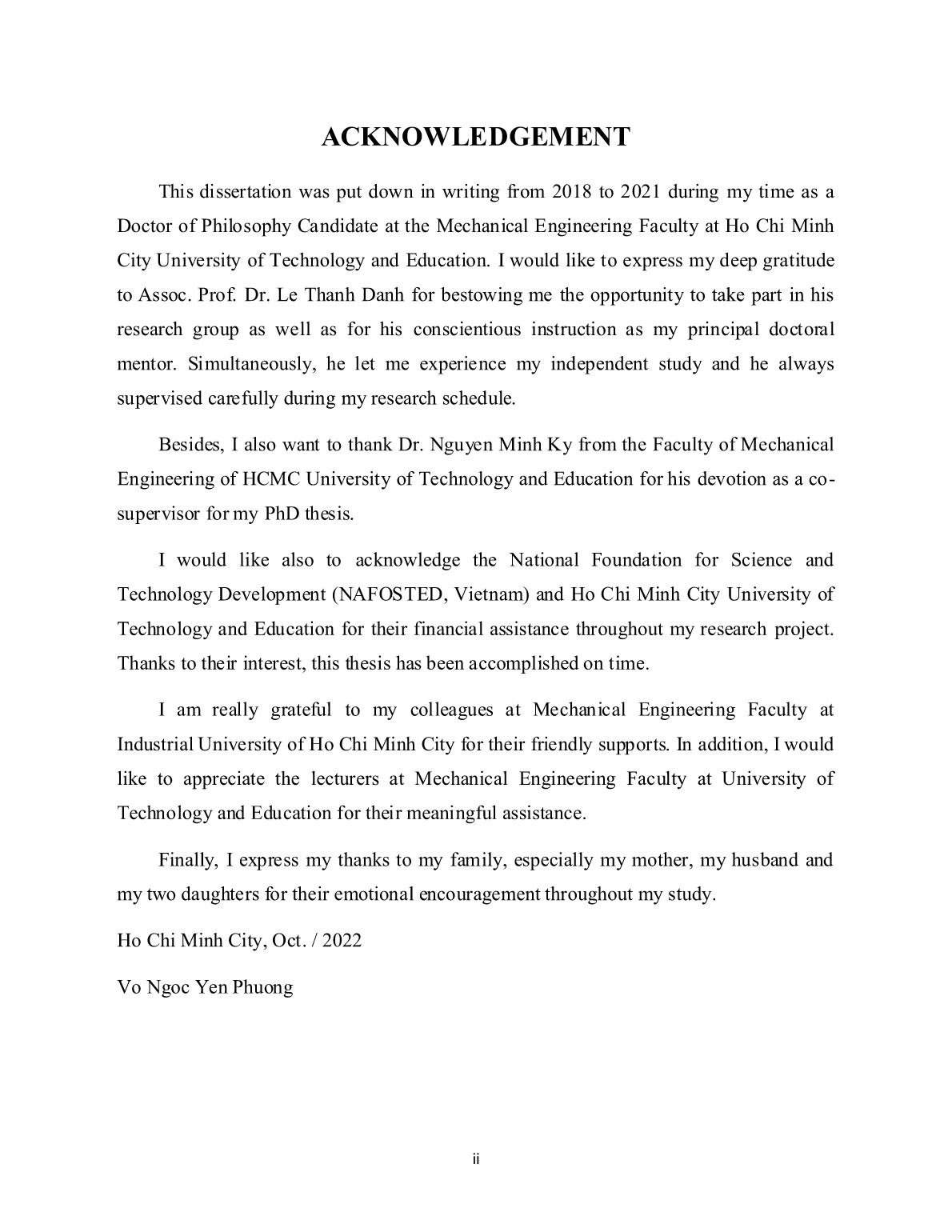
Trang 6

Trang 7
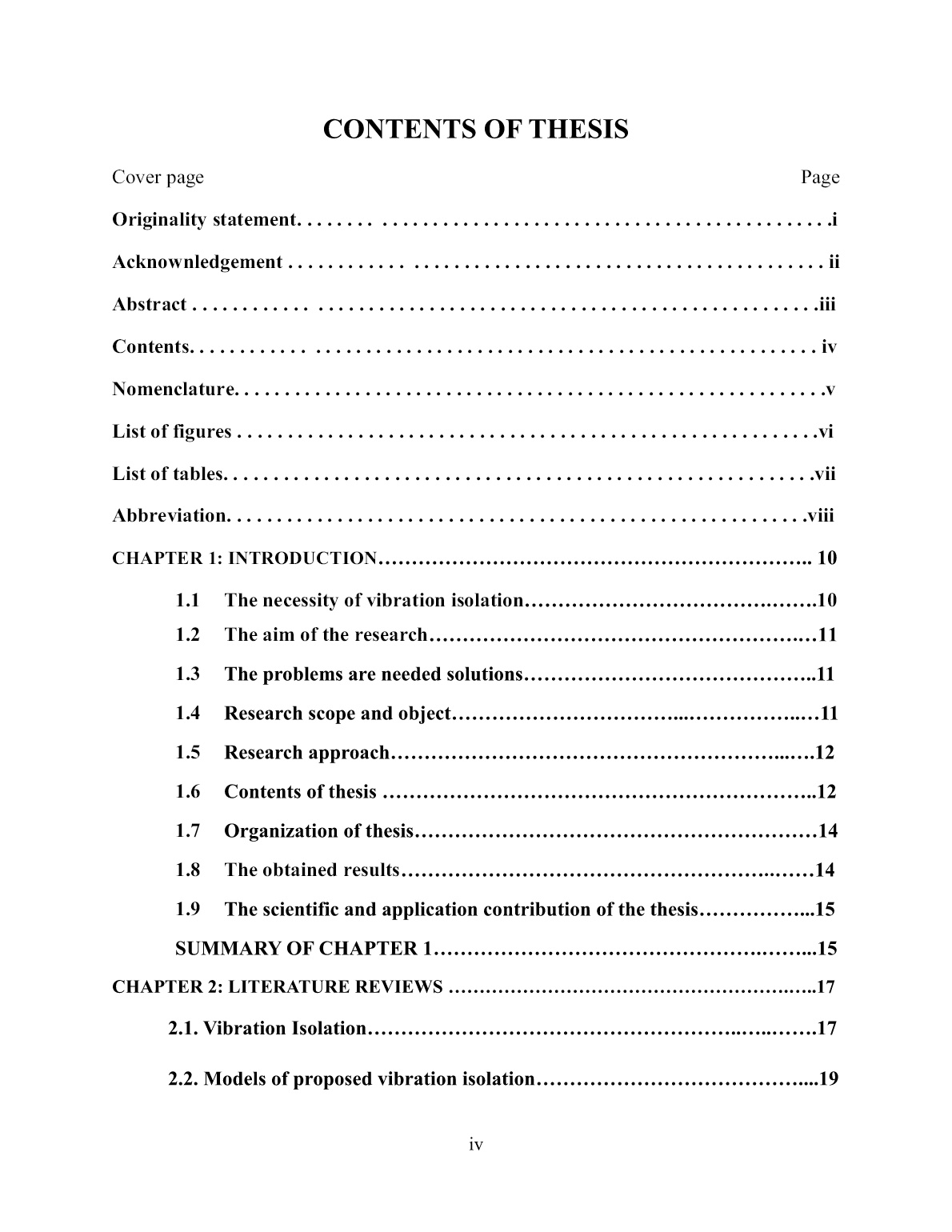
Trang 8
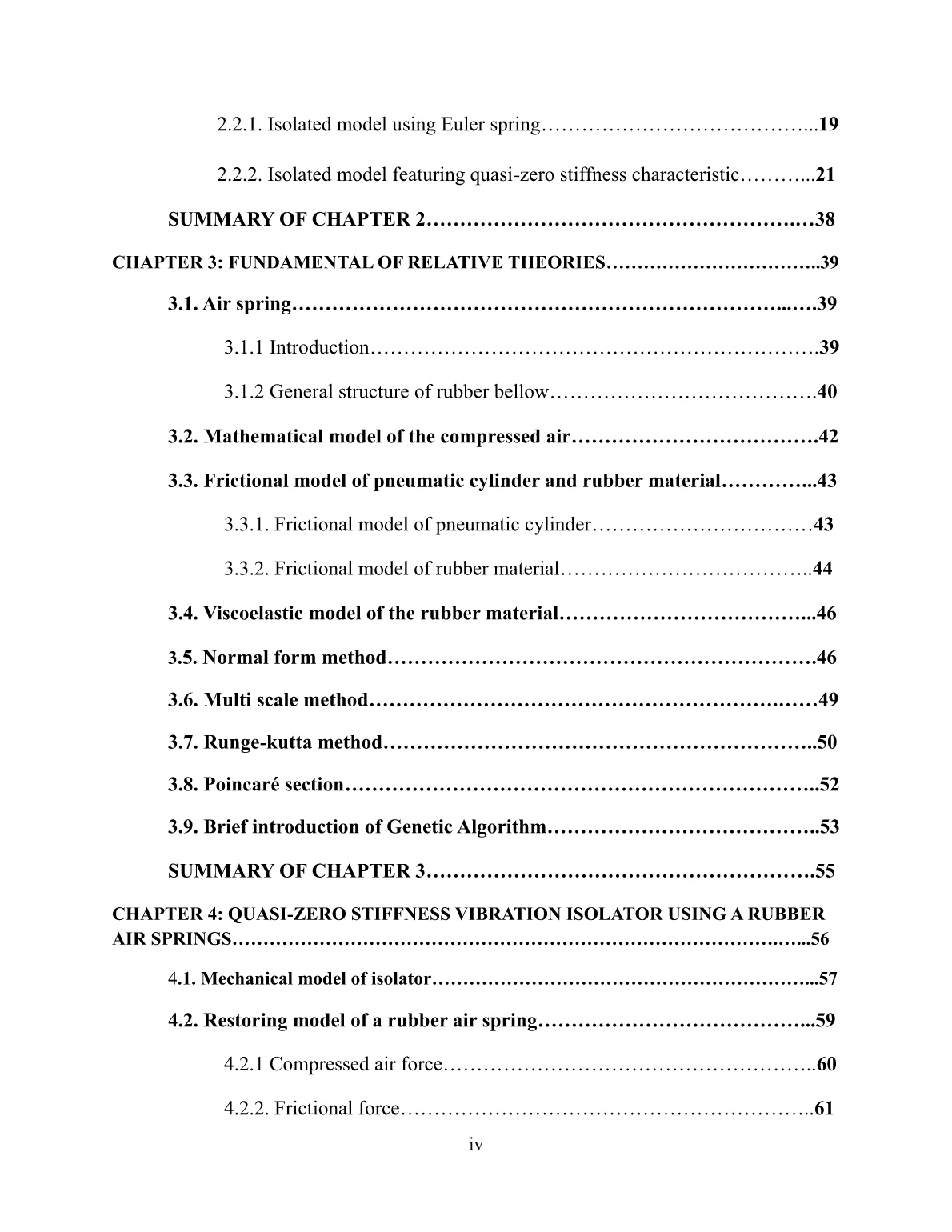
Trang 9

Trang 10
Tải về để xem bản đầy đủ
Bạn đang xem 10 trang mẫu của tài liệu "Luận án Study on the quasi-zero stiffness vibration isolation system", để tải tài liệu gốc về máy hãy click vào nút Download ở trên.
Tóm tắt nội dung tài liệu: Luận án Study on the quasi-zero stiffness vibration isolation system
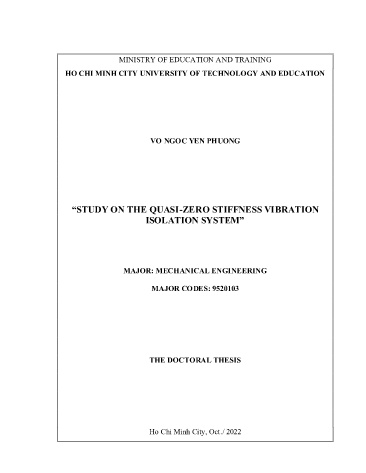
2 2 2 4 4 5 5 5 5 [ ] [0 0 /3 -2 / /3 /8 0 0 /8 /15 4 /3 -6 / 4 /3 /15 /24 5 /8 0 0 5 / /24 ] B (4.66) 85 By substituting Eqs. (4.57-4.59) into Eq. (4.51), then balancing the ie and ie terms, the first-order differential equation in pW and mW can be written as following: 2 2 3 2 2 3 5 2 2 2 3 2 3 5 3 10(1 ) W W W W W 2 W 1 4 16 3 102 (1 ) W W W W W 2 W 4 16 p p m p m p p m m p m p m m i i i iW W i i i i (4.67) In order to find the steady-state amplitude solutions, pW and mW are set zero, simultaneously using with ipW W e and imW W e , the result is to obtain: 4 2 3 5 3 5 2 3 5 3 5 3 10(1 ) W W W 2 W 4 16 2 Wtan 3 10(1 ) W W W 4 16 (4.68) Thus, using Eqs.(4.56-57), the result of the relative displacement of the load plate at the steady state is obtained as following: cos( ) u w W (4.69) In addition, by substituting =t n, the excitation signal can be written in dimensionless form as: cos( )ee e z z Z (4.70) Inserting Eqs. (4.69) and (4.70) into Eq. (4.41), the dimensionless absolute displacement response of the isolated object being: cos( ) cos( )z d W (4.71) where: / ed d Z 86 By using Euler equation: cos sin 1cos 2 1sin 2 i i i i i e i e e i e e (4.72) Eq. (4.71) can be rewritten as following: 1 1ˆ ˆ1 12 2i i i iz d We e We e (4.73) Letting: 1 1 i i i i We Ze We Ze (4.74) with Z is the absolute vibration amplitude of the isolated object in dimensionless form, is the phase difference between z and ze, that is: 21 2 cos Wsintan 1 cos Z W W W (4.75) According to Eq. (4.74), Eq. (4.73) is recast as below: 1 1 cos2 2 i i i iz d Ze e Ze e d Z (4.76) Next, it is meaningful that the isolation effectiveness (vibration transmissibility) of the QSAVIM using RAS which is defined by the ratio of the absolute amplitude (Z) of the load plate to the excitation amplitude (Ze), can be estimated by following formula: 21 2 cos a e Z T Z W W Z (4.77) 87 As seen in Eq. (4.77), the effected vibration isolation is the region in which the value of the vibration transmissibility (Ta) is lower than one. This means that the absolute displacement of the isolated load is smaller than the excitation. Furthermore, to determine the stability of the steady state response solution predicted by the Normal form technique, the amplitude of the response must be allowed to vary slowly with time. It means that a small disturbance is superposed on the steady state solution. The stability is governed by eigenvalue of the Jacobian of the Eq. (4.78). The Jacobian can be written as following: 11 12 21 22 j j j j j (4.78) in which j11, j12, j21 and j22 are given in (4.79) 2 2 2 11 3 5 2 3 12 3 5 2 3 21 3 5 2 2 2 22 3 5 1 3 30(1 ) W W W W 2 2 2 16 1 3 10W W W 2 4 8 1 3 10W W W 2 4 8 1 3 30(1 ) W W W W 2 2 2 16 p p m p m p p p p m m m m p m p m p m p m m dW j i i i dW dW j i i dW dWj i i dW dWj i i i dW (4.79) The eigenvalue of the Jacobian is determined as below: 11 12 2 11 22 12 21 21 22 ( ) 0 j j j j j j j j (4.80) By using the Routh criterion, to determine the boundary of the stability of the solution given in Eq. (4.68), it is observed that 11 22( )j j is negative, it can be deduced that the system can have an eigenvalue with a positive real component if 12 21 0j j , such 88 that 12 21 0j j is the boundary where the transition from the stable to unstable regions occurs. 4.5. Effects of configurative parameters on vibration transmissibility curve 4.5.1. Influence of pressure ratio on the shape of the amplitude-frequency response curve Firstly, the influence of the pressure ratio defined as the proportion of 2whP to 1whP on the relative amplitude-frequency responses, which are numerical simulations of Eq. (4.68), is shown in Fig. 4.15(a). The pressure ratio is varied from 1.2 to 1.57, but other parameters are kept at the values of =37o, R=60mm, r=20mm, Ho=25.6mm for which the dynamic stiffness around the desirable static equilibrium position is predicted by using Eq. (4.30) as shown in Fig. 4.15(b). It is interesting to observe that the resonant peak amplitude and frequency are decreased according to the growth of the pressure ratio . Besides, the boundary of stability of the steady state solution denoted by the red dashed lines is also expanded in accordance with the increase in the resonant peak including the amplitude and frequency. It is evident that when the pressure ratio is upgraded, the dynamic stiffness at the DSEP is reduced as shown in Fig. 4.15(b). As known, the benefit of low stiffness is low resonance frequency. In addition, as seen in Fig. 4.15(a), the amplitude-frequency curves are bended to the right. It means that there exists the frequency jump phenomenon including the jump-up and jump-down. The level of bending is reduced as the pressure ratio is increased. For each value of the pressure ratio, the system will offer a jump-down and a jump-up point. In region between the jump-up and jump-down points (plotted by the dot lines), there can exist three branches corresponding to three solution of Eq. (4.47) obtained by the Normal form. Among them, the middle branch is unstable solution and unrealizable in any experiment determined by the Routh criterion meanwhile the two remaining cases including upper and low branches are stable solutions. For a given frequency of 89 excitation, the steady response of the system can only be upper branch (called resonant solutions) or low branch (called non-resonant solutions). The initial conditions (position and velocity) will determine which branch will actually occur. This will be explained clearly next section. Fig.4.15. (a) The relative amplitude-frequency response of the QSAVIM using RAS with Eq. (4.68) for Pwh1=2 bar, =0.06, =37o, R=60mm, r=20mm, Ho=25.6mm and =1.2, 1.3, 1.4, 1.5, 1.57. (b) Dynamic stiffness curves with the same parameters in (a). The trajectory of these frequency jump points versus the frequency is plotted in Fig. 4.16 (a) for =0.47, 0.5, 0.7, 1.0, 1.2, 1.43, the same other parameters as in Fig. 4.15. The point of jump-up frequency is presented by the red solid line, the jump-down one is exhibited by the blue dashed line. It can be noteworthy that, with values of =1.43 or 0.47, the jump-down point closely moves to jump-up one. In other words, the effect of the frequency jump phenomena on the dynamic response is reduced. However, it is clear that as shown in Fig. 4.16(b) that if =0.47, the non-dimension dynamic stiffness at the DSEP is quasi-unity. In this case, the dynamic stiffness of the proposed system at the DSEP is nearly equal to that of the load bearing mechanism in vertical direction. The result is that in the resonant region the isolation effectiveness of the QSAVIM using RAS (presented by the red solid line) may be lower than that of the ETVIM in which the load plate is supported by the LBM meanwhile the SCM is removed (the 0 5 10 15 20 25 0 1 2 3 4 5 14 15 16 2 3 4 5 -0.4 -0.2 0.0 0.2 0.4 0.0 0.2 0.4 0.6 W Kˆ 90 blue dashed line) as presented in Fig. 4.17. Oppositely, if =1.43 for which the dimensionless dynamic stiffness at the DSEP is smaller than one (approximately 0.12), the isolation effectiveness of the proposed system (exhibited by the pink dot line) is improved remarkably compared with that of the system without the SCM. Fig. 4.16. (a) Trajectories of the frequency-jump points for =0.06 and the same other parameters as in Fig. 4.15. Herein, the red solid line is denoted for the jump-up points and the jump-down points are presented by the blue dashed line. (b) Dynamic stiffness curves for =1.43 and 0.47 the same other parameters as in (a) Fig. 4.17. Comparison of isolation effectiveness of the ETVIM and the QSAVIM using RAS having =0.06 and =0.47 and 1.43 and the same other parameters as in Fig. 4.15 (a). 10 15 20 25 3.0 4.5 6.0 7.5 -0.4 -0.2 0.0 0.2 0.4 0.1 0.2 0.3 0.4 0.5 0.6 0.7 0.8 0.9 1.0 1.1 W Kˆ 0 10 20 30 40 50 60 0 2 4 6 8 10 Ab so lu te tr an sm is si bi lit y T 91 Secondly, on the aspect of geometry, to obtain the desirable static equilibrium position, the dependence of the isolated object weight on the wedge angle and the radius r of roller is shown in Fig. 4.18(a). Among the inclined angle and the radius r, the isolated load is strongly affected by the inclined angle . However, in the proposed structure, the load bearing mechanism is only employed to support the isolated object, meanwhile, the dynamic stiffness of the system is corrected by the stiffness corrected mechanism, therefore, with the suitably chosen parameters of r, and 1whP for the corresponding isolated mass, it is possible to gain the DSEP but not to obtain the desirable low dynamic stiffness at this position. Indeed, in order to satisfy these requirements, there is a relation between the pressure ratio and these geometric parameters so that the dynamic stiffness at the DSEP is quasi-zero as shown in Fig. 4.18 (b). It can be seen that the pressure ratio is increased according to the growth of the radius r of the roller and the inclined angle . Specifically, if the angle is smaller than 45 degrees, the influence of the radius r of the roller on is light, after 45 degrees, the pressure ratio is strongly affected by the variation of the radius r. Similarly, the slope of the curve of the pressure ratio with respect to the wedge angle will be upgraded along with the expansion of this angle. Fig. 4.18. Relationship between the geometric parameters consisting of the wedge angle , the radius r of the roller and the isolated load M (a) and the pressure ratio (b). It is noted that for this relationship the QSAVIM using RAS obtains the quasi-zero stiffness at the DSEP, 1 2 whP bar 92 4.5.2. Influence of geometrical parameters on the resonant peak. Fig. 4.19. Relative amplitude-frequency curves of the proposed model with Eq. (4.68) for r=20 mm and various values of (a), for =37o and various values of r (b), herein, 1 2 bar whP , =0.06, R=60 mm, Ho=25.6mm, other parameters noted in top-right corner panel for (a) and bottom-right corner panel for (b) Furthermore, the effects of the geometrical parameters including the wedge angle and the radius r of the roller on the shape of the amplitude-frequency curve are studied when the dimensionless dynamic stiffness value ˆ D S E PK at the DSEP is always equal to 0.2. Firstly, the influence of varying the wedge angle is taken into account as shown in Fig. 4.19 (a). As above analyzed, in order to achieve ˆ 0 .2 D SE PK , as the values of =30o, 35o, 40o, 45o, the value of r=20 mm and the same other parameters as in Fig. 4.16, the pressure ratio calculated by using Eq. (4.31) is equal to 0.89, 1.21, 1.59, 2.09. The result confirmed that peak amplitude is reduced in accordance with the increase in value of , oppositely, the peak frequency is increased lightly. Secondly, the radius r of the roller is varied with a value set of 10, 20, 40 and 60mm, the value of =37o and other parameters are remained as in the first case. For which, the pressure ratio is determined as following: 1.23, 1.35, 1.58 and 1.82. It can be observed from Fig. 4.19(b) that there is a small reduction in the resonant peak amplitude and frequency W 0 5 10 15 20 25 0.0 0.5 1.0 1.5 2.0 2.5 3.0 3.5 0 5 10 15 20 25 0 1 2 3 4 5 W ˆ DSEPK ˆ DSEPK 93 when the diameter of the roller is developed. These results are also confirmed in Fig. 4.20 and it may be seen that the effect of the wedge angle on the resonant peak is stronger than that of the diameter of the roller. Fig. 4.20. Dependence of the resonant peak on the geometrical parameters of the system given by Eq. (4.68) with the same parameters as in Fig. 4.19 (a) Peak amplitude. (b) Peak frequency 4.5.3. Effects of damping on vibration transmissibility curve In order to study the effects of the parameter on the shape of the amplitude- frequency curve, the parameters of the QSAVIM using RAS are set as following: 1 2 bar whP , =37o, R=60mm, r=20mm, Ho=25.6mm and the pressure ratio =1.35 for which the dimensionless dynamic stiffness ˆDSEPK at the DSEP is equal to 0.2. Meanwhile, a set of parameters =0.01, 0.02, 0.04 and 0.07 is employed to investigate these effects. By using Eq. (4.68), the amplitude-frequency curves are predicted as shown in Fig. 4.21, herein, the notations of the response curves are presented in detail in upper-left corner panel. It reveals that the peak amplitude and the resonant frequency are increased as the damping ratio is reduced. Besides, the system with a smaller value of the parameter will have greater bending level of the amplitude-frequency curve. W 94 Especially, in this case, with =0.01, the resonant peak is very far compared with that of >0.01. Fig. 4.21. Amplitude-frequency response of the QSAVIM using RAS for Pwh1=2 bar, =37o, R=60mm, r=20mm, Ho=25.6mm and =1.35. 4.6. Complex dynamic analysis As presented above, the effects of the pressure ratio (µ) and geometrical parameters on the dynamic response as the vibration transmissibility curve were disclosed thank to Normal form method. However, this method is considered as one of the approximate analytical methods, which carried out through some assumption in which the load plate vibrates around the equilibrium position with small amplitude as there is a harmonic excitation from the base, simultaneously, the restoring force is mainly contributed by the compressed air and is expressed simply by an approximated polynomial. Nevertheless, the proposed model offers strongly complex and nonlinear characteristic in dynamic response such as the coexistence of multiple solutions, bifurcation, chaotic motions, etcBut these phenomena are not revealed by the simple analytical method in the previous section. This is also one of the limitations of using the analytical method. 0 5 10 15 20 0 1 2 3 4 5 6 7 8 ˆ DSEPK rad/s W 95 Hence, it is necessary to explore more complex dynamic behavior through the numerical integration for Eq. (4.45) by using fourth-order Runge-Kutta algorithm with a fixed time step of 1/100 of the harmonic excitation period. Simultanuosly, the data of maximum amplitude are sampled via using Poincaré sections. Namely, the force of the air spring contributed by three components: compressed air, friction and viscoelastic will be taken into account which means that Fs is calculated by Eq. (4.23) in which airF is replaced by Fras given in Eq. (4.1). Besides, for a more challenging excitation, a random signal excited from the base will be also considered to evaluate the isolation response of the QSAVIM using RAS. 4.6.1. Frequency jump phenomenon By integrating numerically for Eq. (4.45) in which a harmonic excitation with amplitude of 10 mm and frequency swept from 0 to 3 rad/s (denoted by the dashed line) and vice versa from 3 to 0 rad/s (the dot line) is used, the result is to obtain the amplitude-frequency response curve as shown in Fig. 4.22. Meanwhile, the solid line denotes the amplitude-frequency response curve through Normal form solution. Where, the pressure Pwh1 of the air spring 1 is set at the value of 2.5 bar, the dimensionless stiffness value at the DSEP is 0.01 and damping ratio () is 0.1 meanwhile other parameters are the same as the cases mentioned above, obtaining the pressure ratio of 0.7245. It is noteworthy to observe that the Normal form solution with the fifth-order approximate curve of the restoring force gives closer approximation to the time- stepping solution As observed in Fig. 4.22, the simulation result confirms that the frequency jump phenomenon including the jump up about 1.7 rad/s and jump down 2.2 rad/s is occurred. The frequency jump can appear the resonant or non-resonant solution as the excited frequency is within the up and down frequency range, which means that this phenomenon is dangerous for vibration isolation. Accordingly, what steady-state solution will be obtained depending on the initial state which includes the position and 96 velocity. Namely, each resonant and non-resonant solution is determined by the region of the initial states determined by using Poincaré section. For example, if the frequency is 1.9 rad/s, the region of the initial state for obtaining the resonant response denoted by the yellow filled area whilst the area filled by dark blue color is representative for the non-resonant one as presented in Fig. 4.23(a). Although, the system can occur a resonant or non-resonant response, the solution of which is periodic with a fixed point marked by the filled circles as shown in Fig. 4.23(b). Fig. 4.22. Comparison between the time-stepping and normal form method 0 1 2 3 0 2 4 6 8 10 97 Fig. 4.23.(a) Initial state family of Eq. (4.45) for =0.1, Pwh1=2.5 bar, and ˆ 0.01 DSEPK (b) Phase portray for initial states u=0 mm; v=0 m/s; and u=0 mm, v=0.1 m/s 4.6.2. Bifurcation phenomenon As mentioned in the analysis solution, the dynamic behavior is only considered as the system attains the desirable static equilibrium position. Therefore, to evaluate comprehensively the complex dynamic behavior of the system in the case in which the equilibrium position will be drifted away from the wanted equilibrium position. This indicates that the air pressure of the load bearing mechanism is not changed but that of the isolated load is changed. Indeed, in the case of Pwh1= 2.5 bar, µ=0.704 and =0.1, the optimal load to obtain the DSEP is 4.747 kg. Two cases are considered as following: -10 -8 -6 -4 -2 0 2 4 6 8 10 -0.08 -0.06 -0.04 -0.02 0.00 0.02 0.04 0.06 0.08 98 Fig. 4.24. Dimensionless displacement response with respect to frequency for M=4.509kg (a), M=4.984 kg (c); phase orbit for M=4.509 (b), M=4.984 kg (d) 1st study case, the isolated load is reduced about 5% comparing with that of the optimal load, remaining 4.509 kg. Its complex dynamic behavior is shown in Fig. 4.24(a). Clearly, there is the appearance of bifurcation of the amplitude-frequency curve from 1-periodic to 2- periodic solution and reversely. The amplitude of the 2- periodic solution may be increased more significantly than that of the 1-periodic solution. For example, if there are two signals of excited frequencies of 8 and 10 rad/s, Fig. 4.24(b) presents the phase trajectory and Poincáre section (denoted by filled circles) indicating that the vibration level of the isolated object subjected to the second excited frequency is higher than the first one. 0 4 8 12 16 -6 -3 0 3 6 Frequency 0 5 10 15 -4 0 4 8 Frequency a. c. -8 -4 0 4 -0.1 0.0 0.1 0.2 Dimensionless displacement Dimensionless displacement b. d. 0.0 3.5 7.0 -0.12 -0.08 -0.04 0.00 0.04 0.08 99 2nd study case, in the same manner of reducing the isolated load, increasing the isolated load about 5 % (obtaining 4.984 kg) compares with the optimal load. The result is presented in Fig. 4.24(c) and (d). Similar to the aforementioned, there is the appearance of the bifurcation phenomenon in the amplitude-frequency curve. However, in this case, bifurcation occurs in two regions including the frequency from 8 to 10.5 rad/s (2- perriodic solution
File đính kèm:
 luan_an_study_on_the_quasi_zero_stiffness_vibration_isolatio.pdf
luan_an_study_on_the_quasi_zero_stiffness_vibration_isolatio.pdf QĐ thành lập hội đồng đánh giá LATS NCS Võ Ngọc Yến Phương.pdf
QĐ thành lập hội đồng đánh giá LATS NCS Võ Ngọc Yến Phương.pdf Tom tat tieng Viet + tieng Anh_ Vo Ngoc Yen Phuong_1824001.pdf
Tom tat tieng Viet + tieng Anh_ Vo Ngoc Yen Phuong_1824001.pdf Trang thong tin LA tieng Viet _tieng Anh_ Vo Ngoc Yen Phuong_1824001.pdf
Trang thong tin LA tieng Viet _tieng Anh_ Vo Ngoc Yen Phuong_1824001.pdf Trang thong tin LA_tieng Viet_tieng Anh_Vo Ngoc Yen Phuong_1824001.docx
Trang thong tin LA_tieng Viet_tieng Anh_Vo Ngoc Yen Phuong_1824001.docx

